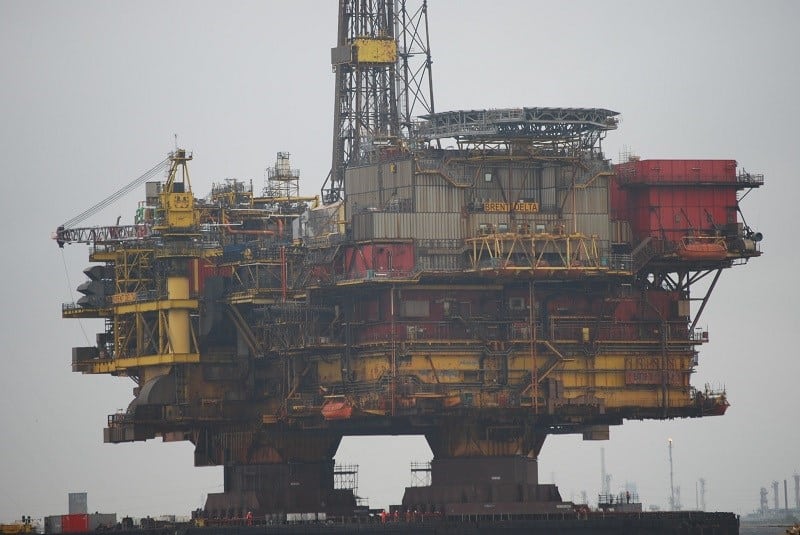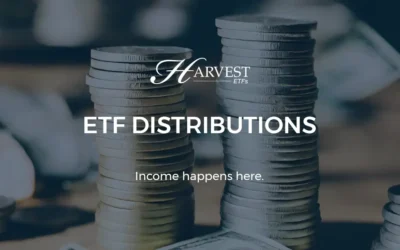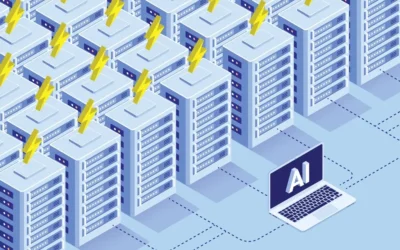For the first time in history, WTI crude slipped into negative territory, because of vanished demand and a storage crunch
Ruth Saldanha20 April, 2020 | 3:24PM
Earlier today, for the first time in history, U.S. oil prices crude collapsed into negative territory, mainly because demand has vanished due to COVID-19 lockdowns, and there is limited global storage capacity. West Texas Intermediate (WTI) crude fell to over minus 37 U.S. dollars per barrel for a May futures contract due to expire on Tuesday. What that means is, if you were to buy a futures contract of crude for delivery on Tuesday, the seller would pay you to take it.
But why did this happen? “Most of the open interest has moved over to the June contract but there has still been a lot of trading in the May contract,” Nicolas Piquard, Vice President, Portfolio Manager and Options Strategist at Horizons ETFs explains. “Normally the world consumes over a hundred million barrels of oil a day but because of COVID-19, that number is down significantly – up to 30% by some estimates. But oil is still being produced, and more than is being consumed so all that extra oil needs to go to storage somewhere,” he says.
“It reminds me of when we started having negative interest rates. Everyone is trying to figure out exactly what’s caused it and what does it really mean. This is a clear North American and near-term issue, with the Brent price down a relatively mere 7% vs. the West Texas benchmark down some 300% and negative, with the collapse being primarily in the expiring May contract, while June is only down 16% and is still above $21/barrel,” points out Paul MacDonald, CIO & Portfolio Manager at Harvest Portfolios Group.
Let’s understand what these terms mean. As Morningstar’s Director of Research Paul Kaplan explained in a 2008 paper, professional commodity-trading advisors often take both long and short positions in commodity futures, because they know that long-only strategies provide inadequate investment exposure to commodities.
A futures strategy generates excess return from two sources: changes in futures prices and the roll yield. The roll yield, which can be positive (backwardation) or negative (contango), results from replacing an expiring contract with one farther away from expiration. This allows the trader to avoid the physical delivery of the commodity yet maintain positions in the futures markets.
As Picquard explains, “If you are settling the May contract (which expires tomorrow) and have nowhere to store the physical oil, then arises the very rare and odd situation where you’re willing to pay somebody to buy your oil.”
First, let’s understand three interrelated markets for each commodity—the spot market, the futures market, and the storage market—and their effects on each other. Here is how Kaplan explains each.
The Spot Market
The spot market is the cash market for the commodity itself. Commodity prices fluctuate based on the supply and demand of any commodity. If there is excess supply, then inventories build up until there is downward pressure on prices and producers reduce supplies in response to that price signal. In case of excess demand, inventories will be drawn down until the shortage causes prices to rise and equilibrium is restored. It can take significant time, however, for inventories to be regulated through price changes due to production and storage situations, leading to trends in commodity spot prices. These trends are reflected in futures prices.
The Futures Market
Wild fluctuations in spot prices can lead to the risk of operating losses for both commercial commodity producers (wheat farmers, for example) and consumers (cereal manufacturers). Therefore, they both have incentives to hedge against the risk of future price fluctuations. The futures markets provide one of the most common and effective ways of hedging price risk.
The Storage Market
Producers of storable commodities use inventories to fill gaps between production and sales. Similarly, consumers use inventories to fill gaps between consumption and purchases. This creates a market for storage. Storage is costly, however. Besides the direct cost of physical storage, there is also an opportunity cost because the money tied up in the commodity could be earning interest. On the margin then, an extra unit is only worth storing if the benefits of storage are at least equal the costs (including the opportunity to earn interest). If this benefit is high enough, it makes more sense to store the commodity for future use or sale than using or selling it now. It also means that the futures price will be lower than the spot price, causing time to expiration and the futures price to be inversely related. The further out the futures contract, the lower the price, thus compensating for the cost of storage. If this is the case, we say that there is “backwardation” in the futures market.
What is backwardation and contango?
In a backwardated market, owners of a commodity in storage are being more than compensated for the costs of storage, but the compensation is not in monetary payments. Rather, it is in less-tangible benefits such as securing a supply of fuel as insurance against an energy crunch. Investors who are taking long positions in futures contracts, however, can realize this compensation monetarily by replacing the contracts that they are holding with longer-term ones, thus locking in profits. This component of excess return realized by investors is referred to as roll yield. In backwardated markets, roll yields are positive. Likewise, when the marginal benefits of storage are low, the relationship between time to expiration and the futures price is positive, a condition known as “contango.” In contangoed markets, roll yields are negative, because replacing contracts results in locking in a loss.
Will negative prices continue?
In a word, unlikely. “The June contract however is where most of the volume has been and I believe more indicative of where prices are, and they are currently over $20. Nonetheless, unless we see significant more cuts from producers storage will continue to be an issue and this kind of volatility especially in the shorter term contracts can continue,” Picquard says.
Macdonald believes this is a near-term issue. “We have not heard of any oil or hedge Funds being liquidated, but this type of price action is indicative of forced selling and suspect that in the coming days we will hear of some forced liquidations. Equity movements seem to be looking beyond the temporary moves in crude in particular those that have exposure to the global pricing benchmarks,” he says.
What should you do?
“For most retail investors the commodity futures market is going to be a very risky endeavor whether you somehow access that market directly or through an ETF of some sort. Futures contracts are the oldest financial instruments in the world, and were created for producers to hedge prices of the commodity that they produce, not for speculators to make a quick buck. These markets require a great deal of specialized expertise to monitor and DIY investors are likely better off allowing a professional manager to provide exposure,” warns Monringstar’s director of investment research Ian Tam.
So there you have it. Stick to your financial plan, ignore the noise, and only invest in what you know and understand.
Link to orignial article:
https://www.morningstar.ca/ca/news/201649/why-oil-went-negative.aspx
Link to HarvestETFs: https://harvestportfolios.com/









